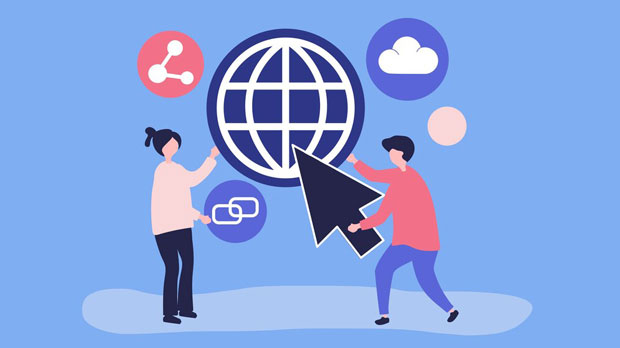When choosing proxy services, socks5 proxy servers and data center proxies are the two most common options. They differ in functionality and usage scenarios, thus having a significant impact on customer needs. socks5 proxy servers typically provide higher privacy protection and stronger compatibility, while data center proxies have advantages in certain applications due to their faster speed and cost-effectiveness. This article will provide a detailed analysis of the roles, advantages and disadvantages of these two agents, as well as their applicability in different usage environments, in order to help customers make choices based on their actual needs. The role and characteristics of SOCKS5 proxy serverSOCKS5 proxy server, as a multifunctional proxy protocol, is widely used in many fields, including bypassing network blockades, privacy protection, and improving network security. The main features of SOCKS5 proxy include the following aspects:1. High privacy protectionSOCKS5 proxy servers do not modify or store user data, thus better protecting user privacy. It supports IPv6 and DNS request forwarding, reducing the risk of data leakage and making user identity information more secure. 2. Strong compatibilityThe SOCKS5 protocol is not dependent on specific applications or protocols and is suitable for various network protocols including HTTP, FTP, POP3, etc. Whether it's a browser, P2P software, or gaming client, SOCKS5 can provide reliable proxy services. 3. Lower latency and faster response time sock s5 proxies typically have lower latency, especially when handling large amounts of data transmission, providing a smoother internet experience. 4. Suitable for applications that require anonymity and privacyDue to its powerful privacy protection function, SOCKS5 proxy is widely used in situations that require anonymity, such as accessing sensitive websites, conducting cross regional data flow, or bypassing geographical location restrictions. The role and characteristics of data center agentsData center proxies typically originate from large data centers and provide fast network connectivity by assigning multiple IP addresses. Compared to SOCKS5 proxies, data center proxies have different advantages and limitations. 1. Fast and efficientData center proxies typically have very high speeds because they are located in optimized network environments and can handle a large number of concurrent requests. Therefore, for users who require high-speed network connections, such as web crawlers, data collectors, or high-frequency traders, data center agents are an ideal choice. 2. High cost-effectivenessCompared to other types of agents, data center agents are usually more affordable because they are deployed in efficient server clusters and do not require too many physical resources, thus providing lower service fees. 3. Suitable for large-scale useAnother advantage of data center agents is their scalability. Due to their usual provision of a large number of IP addresses, they are suitable for businesses that require a large number of IP addresses, such as batch account registration, large-scale data scraping, etc. 4. Weak privacy protectionAlthough data center proxies can provide good network performance, they are not suitable for farms that require high privacy protection because their IP addresses are usually public and easily recognized and blocked by websites. When using data center proxies, users' identities may be more easily traced. Comparative Analysis of SOCKS5 Proxy and Data Center ProxySOCKS5 proxy and data center proxy each have their own characteristics and applicable scenarios. The following is the main comparative analysis between them:1. Privacy protection and securitySOCKS5 proxy is suitable for tasks that require high anonymity due to its strong privacy protection function, while data center proxy is relatively weak in privacy protection and is easily blocked by websites. Therefore, SOCKS5 proxy is more suitable for scenarios that require protecting user identity, such as accessing sensitive information, cross-border data access, etc. 2. Speed and PerformanceIn terms of speed, data center agents typically offer higher connection speeds, making them suitable for applications that require high-frequency data transmission and low latency, such as web crawlers, advertising campaigns, and market data analysis. SOCKS5 proxy has a slower speed, but it is more stable and can handle various protocols and applications, suitable for different needs. 3. Cost effectivenessDue to its efficient operation mode and large-scale deployment, data center agents usually have low costs and are suitable for customers who need to use proxy services on a large scale, such as batch account management, data scraping, etc. SOCKS5 proxy, due to providing stronger privacy protection and compatibility, usually comes at a higher price and is suitable for users who have higher requirements for privacy and security. 4. Usage scenariosSOCKS5 proxy is suitable for situations that require higher privacy protection, especially performing well in scenarios such as anonymous access, bypassing blockades, and cross regional access. Data center proxies are more suitable for applications that require fast network connections, efficient concurrency, and large-scale proxy services, such as web crawlers, market analysis, and SEO optimization. How to choose the appropriate proxy service? Choosing the appropriate agency service depends on the specific needs of the client. Here are some selection suggestions:1. Users who have requirements for privacy protectionIf your main need is to protect personal privacy and avoid being tracked and detected, then SOCKS5 proxy is undoubtedly the best choice. It provides better anonymity and is suitable for accessing sensitive websites or activities that require identity protection. 2. Users who require efficient data transmission and low latencyIf your job requires frequent data collection, web crawling, or other tasks that require high-speed connectivity, data center agents will provide you with ideal speed and stability. 3. Users with limited budgetIf you have budget constraints and don't need extreme privacy protection, choosing a data center agent can save you costs while providing the efficient performance you need. In conclusion, the choice between SOCKS5 proxy servers and data center proxies largely depends on the specific requirements of the user. SOCKS5 proxies are ideal for users who prioritize privacy and security, while data center proxies offer faster speeds and cost-effectiveness, making them more suitable for high-volume tasks. By understanding the key features and benefits of each type of proxy, customers can make more informed decisions based on their needs, whether it's for personal browsing, data scraping, or large-scale network tasks.
Sep 17, 2025



































































